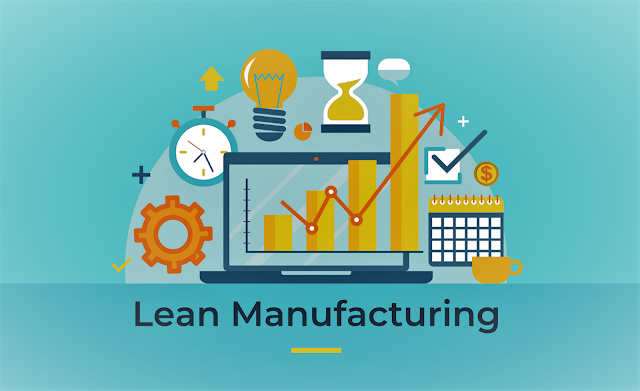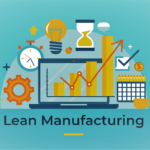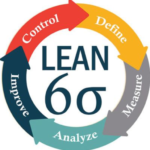
The Fundamentals of Lean Manufacturing: A Comprehensive Guide
In today’s highly competitive market, businesses are constantly seeking ways to increase efficiency, reduce costs, and improve productivity. One approach that has gained significant traction is lean manufacturing. Originally developed by Toyota in the automotive industry, lean principles can be applied to any business or production process, regardless of the industry. By eliminating waste and optimizing value-added activities, lean manufacturing enables organizations to streamline their operations and deliver greater value to customers.
In this comprehensive guide, we will explore the key principles and strategies of lean manufacturing. We will delve into the origins of lean, its benefits, and how it can be implemented in various contexts. Whether you are a manufacturer, a healthcare provider, or an office manager, this guide will equip you with the knowledge and tools to implement lean practices and drive continuous improvement in your organization.
What is Lean Manufacturing?
Lean manufacturing is a systematic approach to process improvement that focuses on eliminating waste and maximizing value creation. The underlying philosophy of lean is to identify and eliminate activities that do not add value to the customer, thereby increasing efficiency, reducing costs, and improving overall performance.
At its core, lean manufacturing aims to achieve the following objectives:
- Waste Minimization: Lean principles emphasize the identification and elimination of waste in all forms, including defects, overproduction, waiting time, unnecessary motion, excess inventory, overprocessing, and underutilized talent. By minimizing waste, organizations can optimize their resources and improve operational efficiency.
- Value Creation: Lean manufacturing places a strong emphasis on understanding and delivering value to the customer. By aligning processes with customer needs and expectations, organizations can ensure that their products and services provide maximum value.
- Continuous Improvement: Lean is not a one-time initiative but a continuous journey towards perfection. Organizations are encouraged to foster a culture of continuous improvement, where employees actively seek opportunities to enhance processes, eliminate waste, and drive innovation.
The Five Principles of Lean Manufacturing
To guide organizations in their pursuit of lean manufacturing, there are five key principles that serve as the foundation for implementing lean practices. These principles provide a roadmap for identifying waste, improving value streams, creating efficient flow, establishing pull systems, and striving for perfection. Let’s explore each principle in detail:
1. Identify Value
The first principle of lean manufacturing is to identify value from the perspective of the customer. Value is defined as any activity or process that the customer is willing to pay for. To identify value, organizations need to understand their customers’ needs, expectations, and preferences. This can be achieved through market research, customer surveys, and direct feedback.
By aligning their processes and resources with customer value, organizations can eliminate activities that do not contribute to the desired outcome. This requires a deep understanding of the customer’s requirements and a focus on delivering products or services that meet those needs.
2. Map the Value Stream
Once value has been identified, the next step is to map the value stream. The value stream represents the end-to-end flow of activities and processes required to deliver the product or service to the customer. It includes all the steps, from raw material acquisition to delivery of the final product.
Value stream mapping is a visual tool that helps organizations identify and analyze the various activities and processes involved in the value stream. It allows them to identify waste, bottlenecks, and areas for improvement. By mapping the value stream, organizations can gain a holistic view of their operations and identify opportunities for optimization.
3. Create Flow
Creating flow is the third principle of lean manufacturing. Flow refers to the smooth and uninterrupted movement of products or services through the value stream. It involves eliminating bottlenecks, reducing cycle times, and ensuring that activities are synchronized to meet customer demand.
To create flow, organizations need to reconfigure their processes, streamline workflows, and remove any barriers that impede the smooth flow of work. This may involve reorganizing workstations, optimizing layouts, implementing standardized work procedures, and improving communication and coordination between departments.
4. Establish Pull
The fourth principle of lean manufacturing is to establish a pull system. In a pull system, production is based on actual customer demand rather than forecasts or production targets. Instead of pushing products through the value stream based on a predetermined schedule, organizations produce items in response to customer orders.
By implementing a pull system, organizations can reduce inventory levels, minimize waste, and improve responsiveness to customer needs. This requires close coordination between different stages of the value stream, effective communication, and efficient material flow.
5. Pursue Perfection
The final principle of lean manufacturing is the pursuit of perfection. Lean is not a destination but a continuous journey towards improving processes and eliminating waste. Organizations should strive for continuous improvement, challenging the status quo, and seeking new ways to optimize their operations.
Pursuing perfection involves fostering a culture of continuous learning, encouraging employee engagement, and embracing a mindset of innovation and experimentation. It requires organizations to regularly evaluate their processes, collect data, and analyze performance metrics to identify areas for improvement.
Benefits of Lean Manufacturing
Implementing lean manufacturing principles can yield numerous benefits for organizations across industries. Here are some of the key advantages:
- Improved Efficiency: Lean manufacturing eliminates waste and optimizes processes, leading to improved efficiency and productivity. By streamlining workflows and reducing non-value-added activities, organizations can achieve higher output with fewer resources.
- Cost Reduction: Lean practices help organizations reduce costs by eliminating waste, reducing inventory levels, and improving resource utilization. By identifying and eliminating activities that do not add value, organizations can optimize their operations and achieve cost savings.
- Enhanced Quality: Lean principles emphasize the elimination of defects and the improvement of process quality. By focusing on continuous improvement and implementing quality control measures, organizations can reduce errors, improve product quality, and enhance customer satisfaction.
- Shorter Lead Times: Lean manufacturing enables organizations to reduce lead times by eliminating bottlenecks, improving flow, and responding quickly to customer demand. This allows organizations to deliver products and services faster, improving customer satisfaction and gaining a competitive edge.
- Increased Flexibility: Lean practices make organizations more agile and adaptable to changes in customer demand and market conditions. By reducing setup times, optimizing workflows, and implementing pull systems, organizations can quickly adjust their production levels and respond to changing customer needs.
- Engaged and Empowered Employees: Lean manufacturing encourages employee engagement and empowerment by involving them in process improvement initiatives. By fostering a culture of continuous improvement, organizations can tap into the knowledge and expertise of their employees, leading to higher job satisfaction and increased productivity.
Implementing Lean Manufacturing
Implementing lean manufacturing requires a systematic and structured approach. Here are some key steps to get started:
- Create Awareness: Educate employees about the principles and benefits of lean manufacturing. Foster a culture of continuous improvement and encourage employee engagement and participation.
- Identify Value: Understand customer needs and expectations. Identify the value-added activities and eliminate non-value-added activities.
- Map the Value Stream: Analyze the end-to-end value stream to identify waste, bottlenecks, and areas for improvement. Use value stream mapping techniques to visualize the flow of activities and processes.
- Create Flow: Streamline workflows, optimize layouts, and remove barriers that impede the smooth flow of work. Implement standardized work procedures and improve communication and coordination between departments.
- Establish Pull: Implement a pull system based on actual customer demand. Reduce inventory levels, improve material flow, and enhance responsiveness to customer needs.
- Pursue Perfection: Continuously monitor and evaluate processes, collect data, and analyze performance metrics. Encourage a culture of continuous improvement, innovation, and learning.
- Provide Training and Support: Train employees on lean manufacturing principles and provide them with the necessary tools and resources to implement lean practices. Support them in identifying and implementing improvement opportunities.
By following these steps and continuously refining your processes, you can successfully implement lean manufacturing principles and drive continuous improvement in your organization.
Conclusion
Lean manufacturing provides a powerful framework for organizations to eliminate waste, improve efficiency, and deliver greater value to customers. By embracing the principles of identifying value, mapping the value stream, creating flow, establishing pull, and pursuing perfection, organizations can optimize their processes and achieve sustainable competitive advantages.
Whether you are in manufacturing, healthcare, or any other industry, implementing lean manufacturing practices can lead to significant improvements in productivity, cost reduction, quality enhancement, and customer satisfaction. By fostering a culture of continuous improvement and empowering employees, organizations can drive innovation and achieve operational excellence.
Start your lean journey today and unlock the full potential of your organization. Embrace lean manufacturing principles and reap the benefits of streamlined processes, improved efficiency, and increased customer value.







